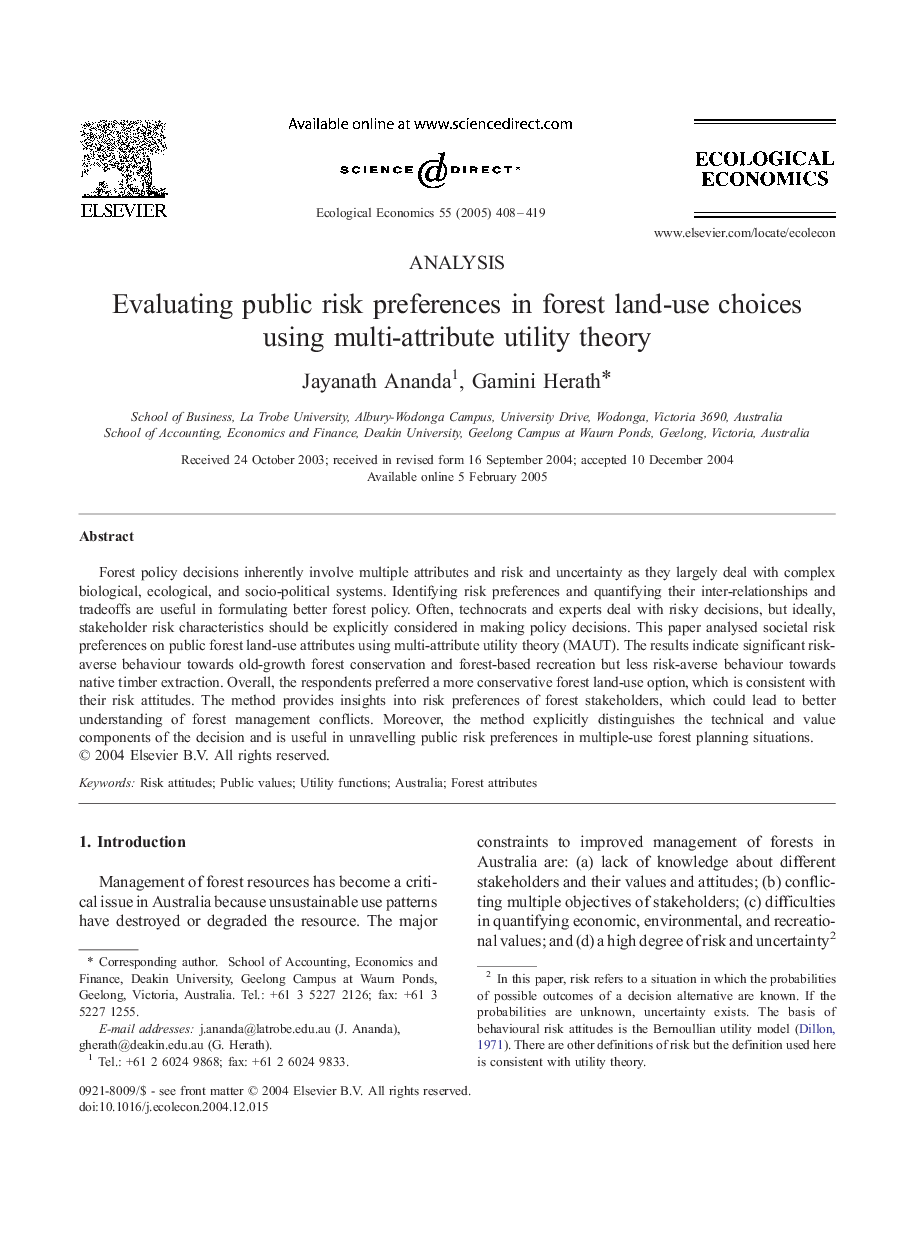| Article ID | Journal | Published Year | Pages | File Type |
|---|---|---|---|---|
| 9547622 | Ecological Economics | 2005 | 12 Pages |
Abstract
Forest policy decisions inherently involve multiple attributes and risk and uncertainty as they largely deal with complex biological, ecological, and socio-political systems. Identifying risk preferences and quantifying their inter-relationships and tradeoffs are useful in formulating better forest policy. Often, technocrats and experts deal with risky decisions, but ideally, stakeholder risk characteristics should be explicitly considered in making policy decisions. This paper analysed societal risk preferences on public forest land-use attributes using multi-attribute utility theory (MAUT). The results indicate significant risk-averse behaviour towards old-growth forest conservation and forest-based recreation but less risk-averse behaviour towards native timber extraction. Overall, the respondents preferred a more conservative forest land-use option, which is consistent with their risk attitudes. The method provides insights into risk preferences of forest stakeholders, which could lead to better understanding of forest management conflicts. Moreover, the method explicitly distinguishes the technical and value components of the decision and is useful in unravelling public risk preferences in multiple-use forest planning situations.
Related Topics
Life Sciences
Agricultural and Biological Sciences
Ecology, Evolution, Behavior and Systematics
Authors
Jayanath Ananda, Gamini Herath,
